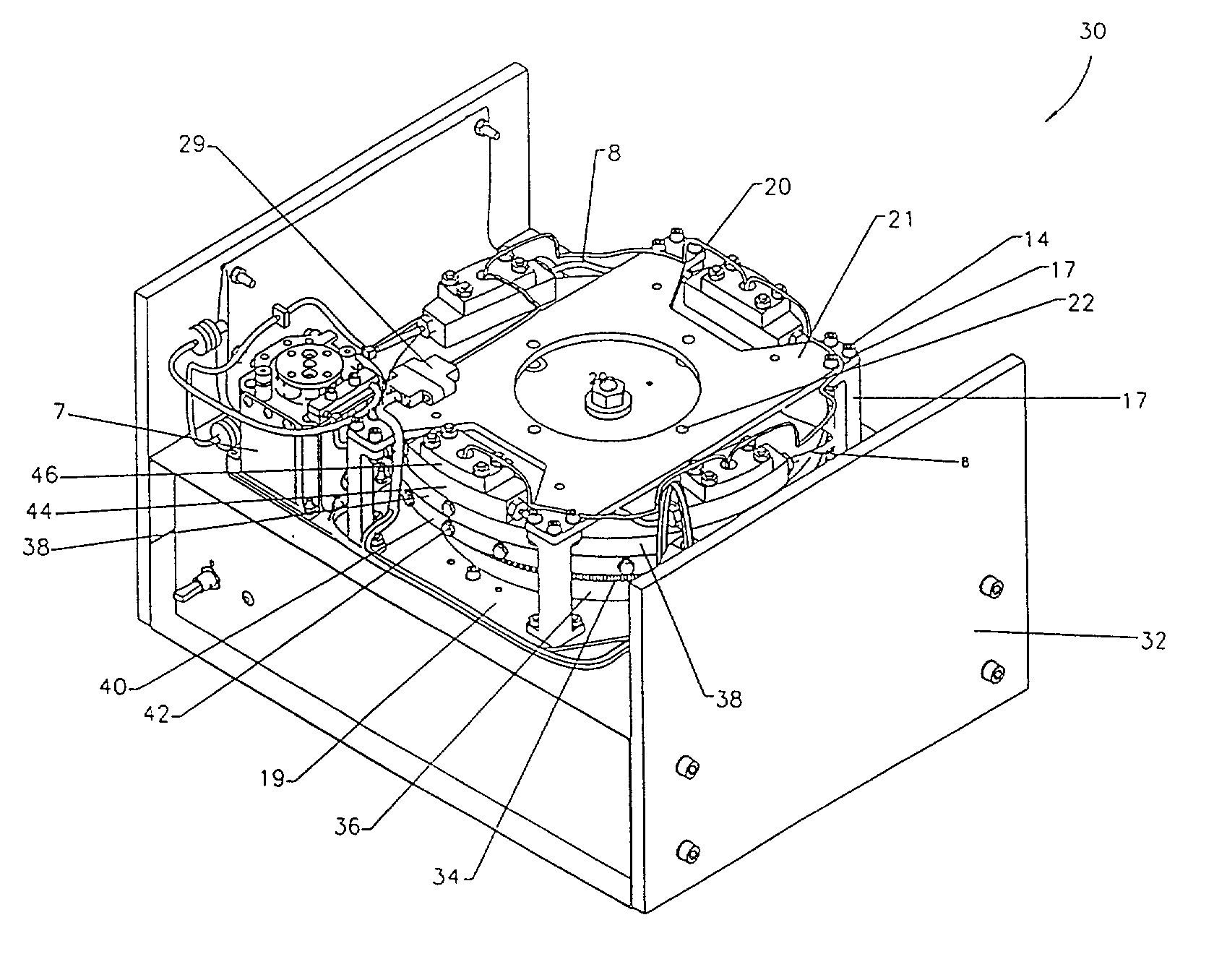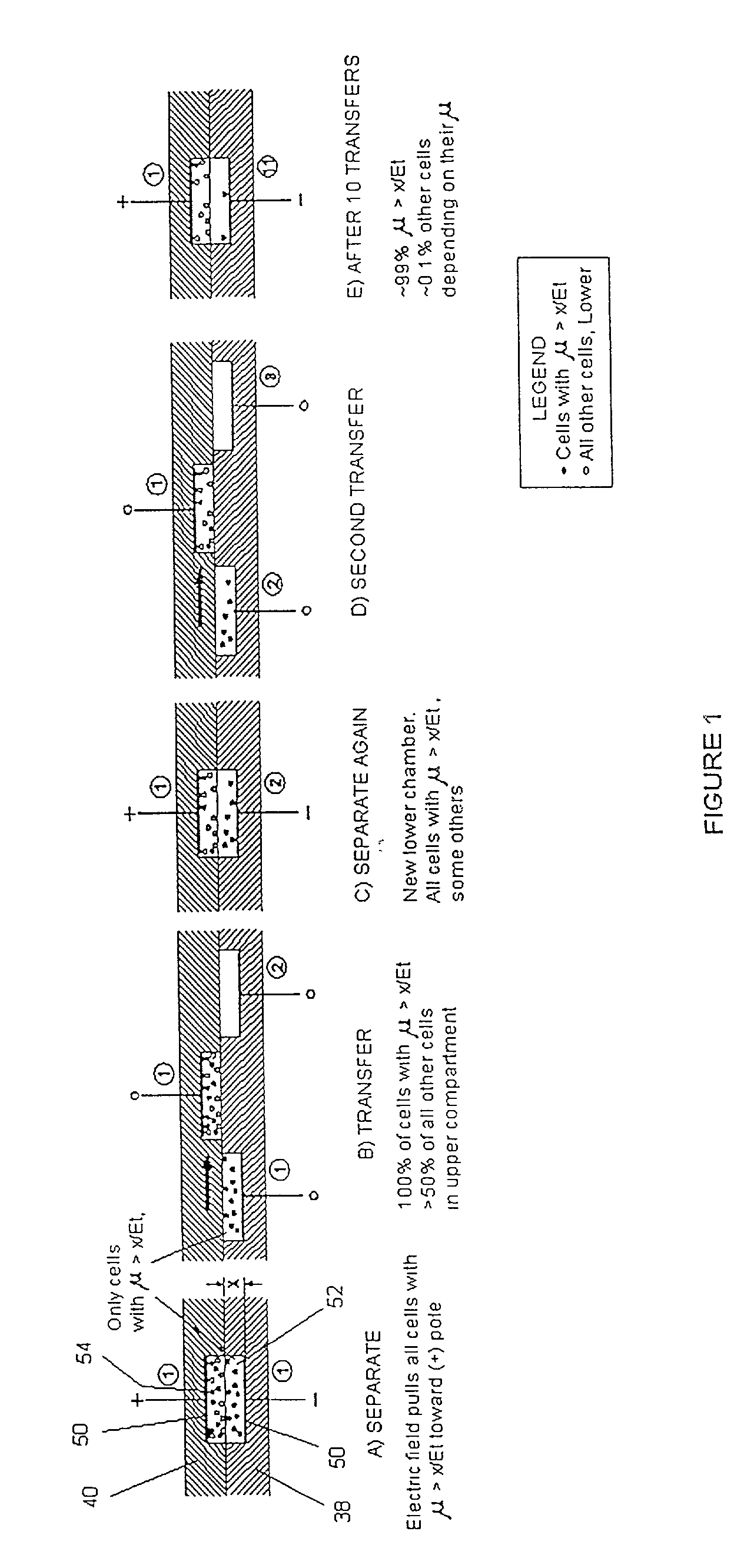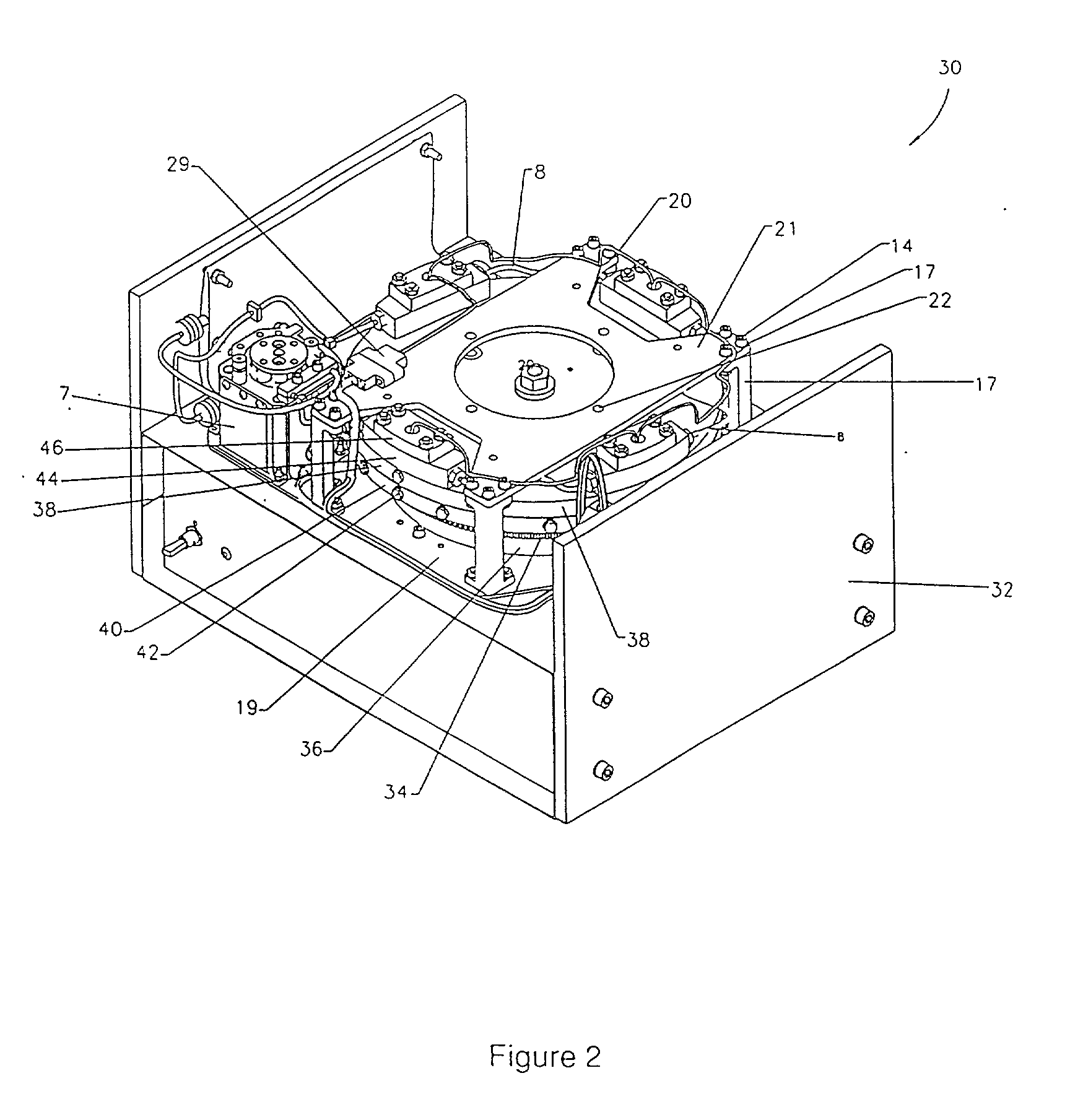Multistage electrophoresis apparatus and method of use for the separation and purification of cells, particles and solutes
a technology of electrophoresis and multi-stage separation, which is applied in the direction of isotope separation, electrolysis, diaphragm, etc., can solve the problems of inability to "graduate" from an analytical tool to a viable unit operation, and the process of electrophoresis has so far been unable to address these problems effectively
- Summary
- Abstract
- Description
- Claims
- Application Information
AI Technical Summary
Problems solved by technology
Method used
Image
Examples
Embodiment Construction
Charged-Solute Concentrator Charged-Solute Concentrator
[0119] An enzyme solution, 1.0 mg / ml in concentration and 1 ml in volume, is placed in the combined sample cuvette (having volume of 0.5 ml) and first collecting cavity (having a volume of 0.5 ml). A field of 5 V / cm is applied for 10 minutes. All of the enzyme in solution is moved to the first collecting cavity, and its concentration is now 2 mg / ml. This solution is contacted with an opposing, second collecting cavity that is 0.25 ml in volume. All of the enzyme is next transferred electrophoreti-cally to this second collecting cavity, and its concentration is now 4 mg / ml. This solution is next contacted with an opposing, third collecting cavity that is 0.125 ml in volume. All of the enzyme is next transferred electrophoretically in 10 minutes to this third collecting cavity, and its concentration is now 8 mg / ml. In this manner an 8-fold concentration of the enzyme has been achieved, which is a typical goal in biochemical proces...
PUM
| Property | Measurement | Unit |
|---|---|---|
| temperature | aaaaa | aaaaa |
| conductivity | aaaaa | aaaaa |
| diameter | aaaaa | aaaaa |
Abstract
Description
Claims
Application Information
 Login to View More
Login to View More - R&D
- Intellectual Property
- Life Sciences
- Materials
- Tech Scout
- Unparalleled Data Quality
- Higher Quality Content
- 60% Fewer Hallucinations
Browse by: Latest US Patents, China's latest patents, Technical Efficacy Thesaurus, Application Domain, Technology Topic, Popular Technical Reports.
© 2025 PatSnap. All rights reserved.Legal|Privacy policy|Modern Slavery Act Transparency Statement|Sitemap|About US| Contact US: help@patsnap.com



